Art of the State
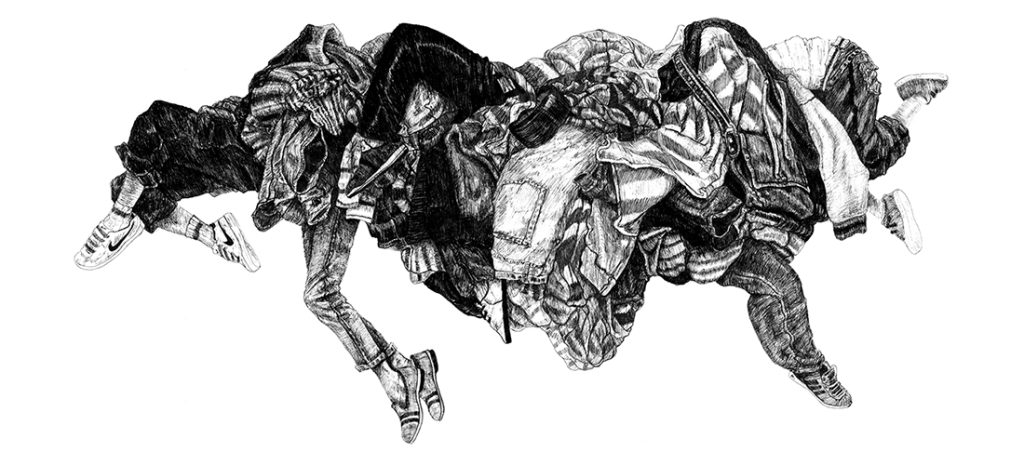
Just Working
Antoine Williams forged his own path to bring his art to light
By Liza Roberts
Left: There Will Be No Miracles Here, printed material and acrylic on wood panel, 2021
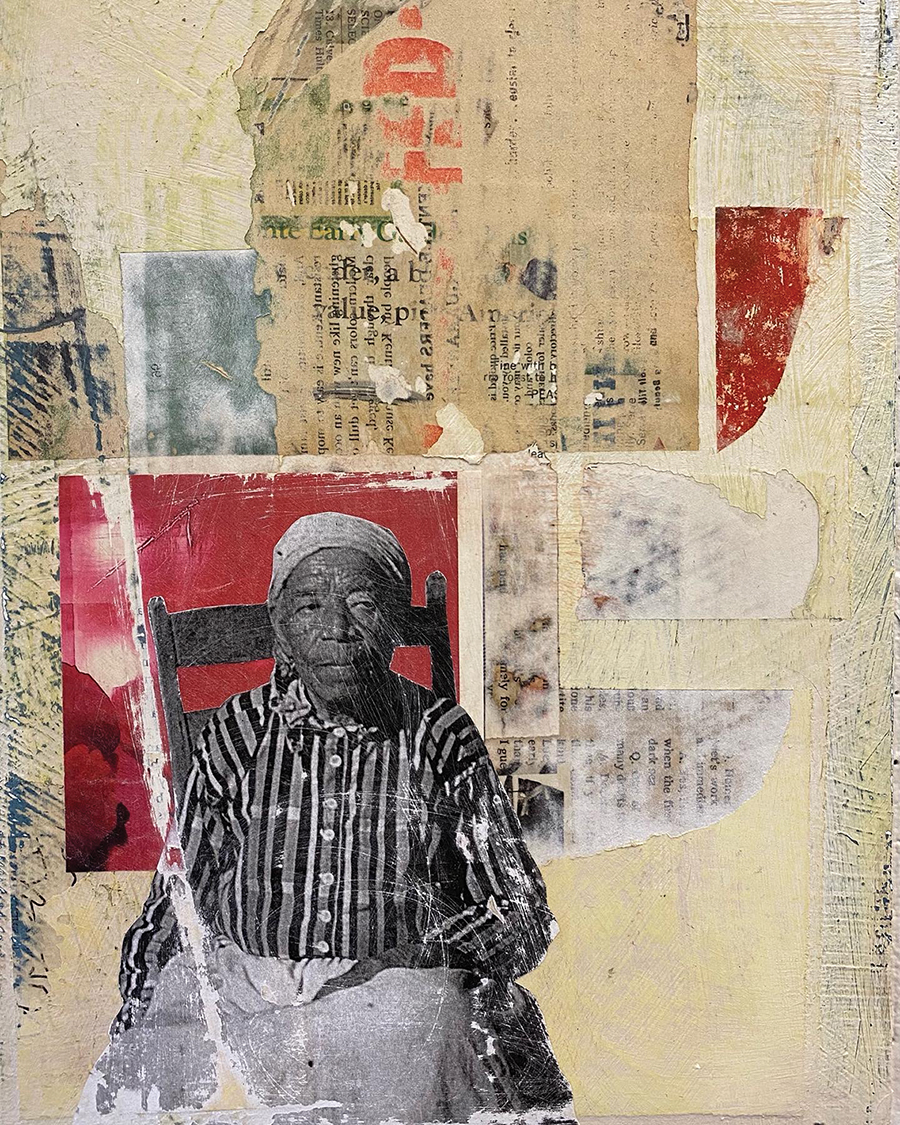
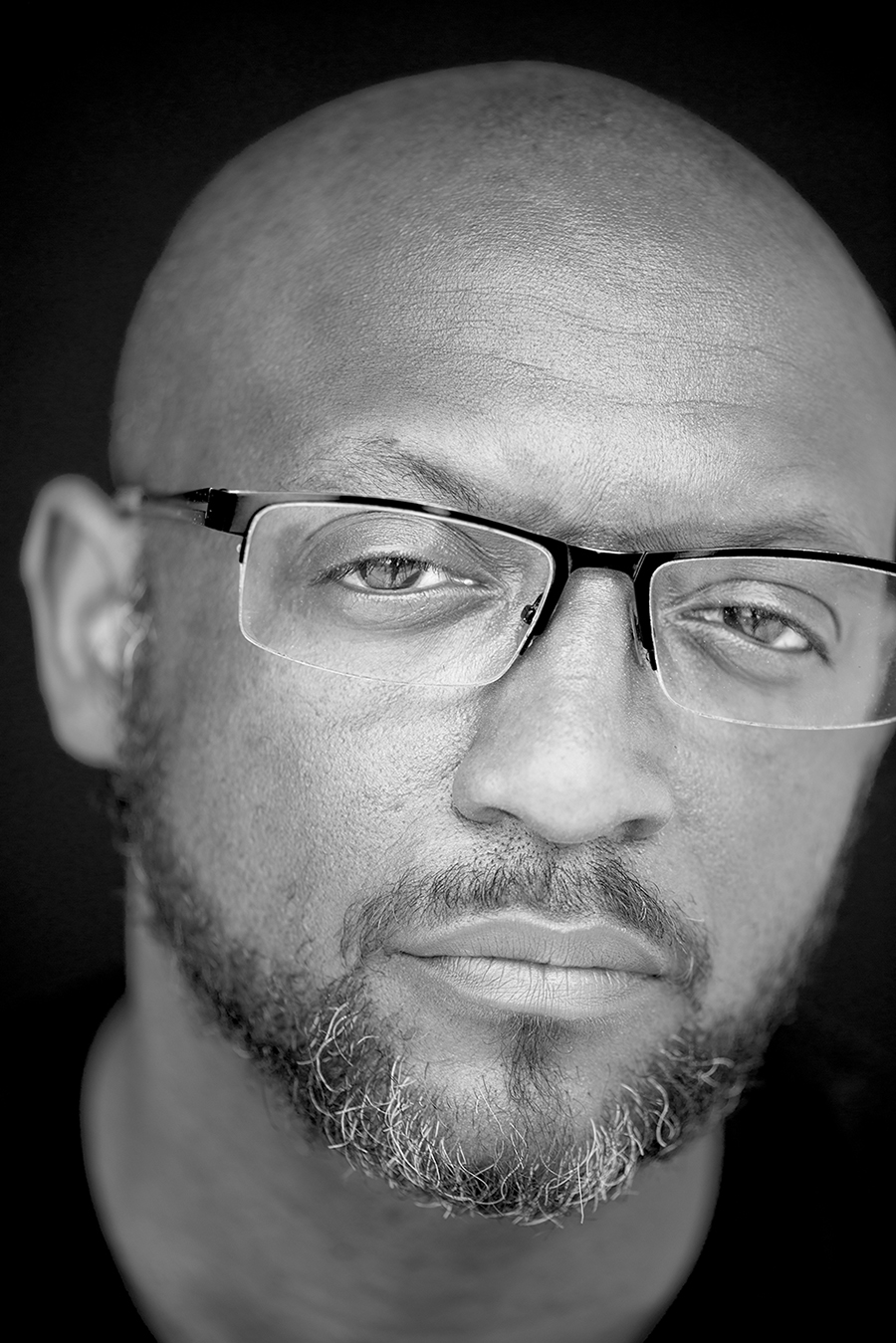
Antoine Williams was in his early 20s when he made an important decision: If he wanted his work to be seen, he’d have to take matters into his own hands.
He’d earned a fine arts degree from University of North Carolina at Charlotte in 2003 and was busy making mult-media work including drawings, paintings and collages that responded to the world around him: about politics, about the war on terror, about “how ridiculous all of it was.” But to Williams, the traditional gallery route seemed impenetrable. Not only to him, but to the other young artists he knew, many of them also young, politically active Black men without a network in the established world of art. “People were literally afraid of us. We were walking into galleries, and I remember one gallery. I asked: Can we do an art show? And they were like: We don’t have metal detectors,” Williams says.
His friends, including multimedia artists and illustrators Marcus Kiser, John Hairston Jr. and Wolly Vinyl, had another hurdle, too. Traditional art venues weren’t the obvious places for the audiences they sought. They wanted to connect with like-minded people who were also influenced by art, comics, music and culture. They were eager for dialogue and weren’t sure they’d find it in a traditional venue. “A museum can be a scary place if you’ve never been there,” Williams says.
Williams knew that from experience. A first-generation college student from “rural, working-class, conservative” Red Springs, North Carolina, Williams never knew an artist or much about art growing up — but his imagination was allowed to flourish. “It was cool to be a creative kid growing up in a place where you could run outside and go in the woods and play,” Williams says. “I was always daydreaming, and I was always either drawing or making stuff.”
He tapped into that wellspring when he cofounded the art collective God City in 2005 with Kiser, Hairston, Vinyl and a few other artists. The group rented industrial spaces, put together pop-up shows and got the word out with flyers. “We were really into hip-hop, politics and comic books,” says Williams. “We would do exhibitions . . . in any place that would take a bunch of young Black dudes.” Over a seven-year run, the group forged collaborations with poets, filmmakers, dancers and DJs. “It was all these groups of Black and brown people making art outside the major institutions,” says Williams. “It became a community in Charlotte . . . It was this really beautiful time.”
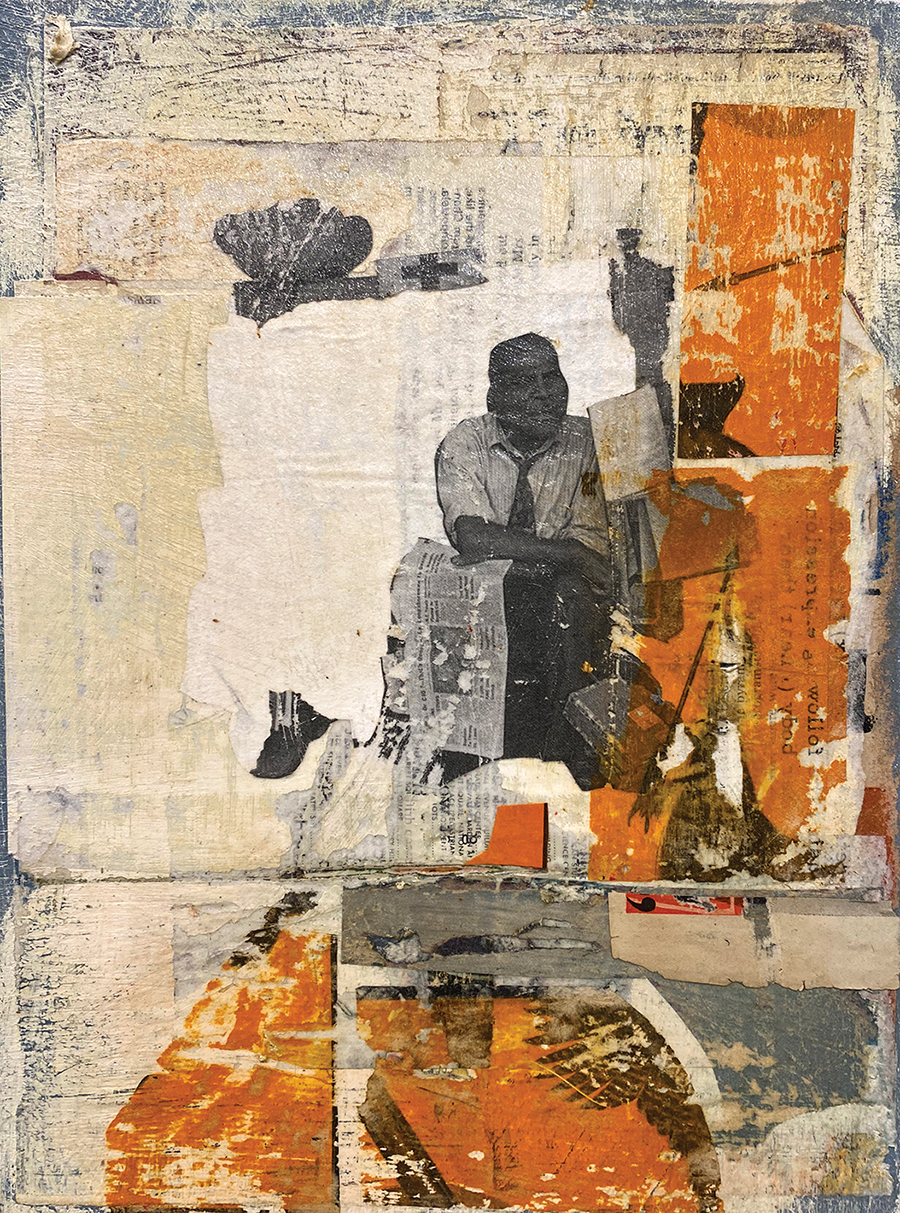
Left: There Will Be No Miracles Here, printed material and acrylic on wood panel, 2021
The establishment took notice. Kimberly Thomas, a curator at the Mint Museum, became a God City regular. In 2008, she included work by Williams and Hairston — as well as art from nationally recognized Black North Carolina artists like Juan Logan and the late Romare Bearden — in a 2008 exhibition about contemporary portrayals of Black masculinity called Scene in America. The exhibit included Williams’ I Wanna Kill Sam, a graphite and acrylic representation of a Black man shouting before a backdrop that could be part of an American flag. It’s about “the frustration of being caught within the system, the system that you don’t fully understand, but that you do know is not working,” says Williams.
Since then, Williams has not struggled to get his art seen. Addressing cultural identity, signifiers of class, race and power, and the stories and myths society tells about them, his work incorporates drawing, painting and collage. Most recently, Williams says, he is focused on “Black folklore and other narratives” and is making art that “relates to Black people and movement to spaces of liberation.” The works shown on these pages incorporate these themes and will be exhibited at the Turner Carroll Gallery in Santa Fe, New Mexico, later this year. Also in 2023, Williams will have four murals installed in Washington, D.C,. as a recipient of the National Academy of Design’s Abbey Mural Prize.
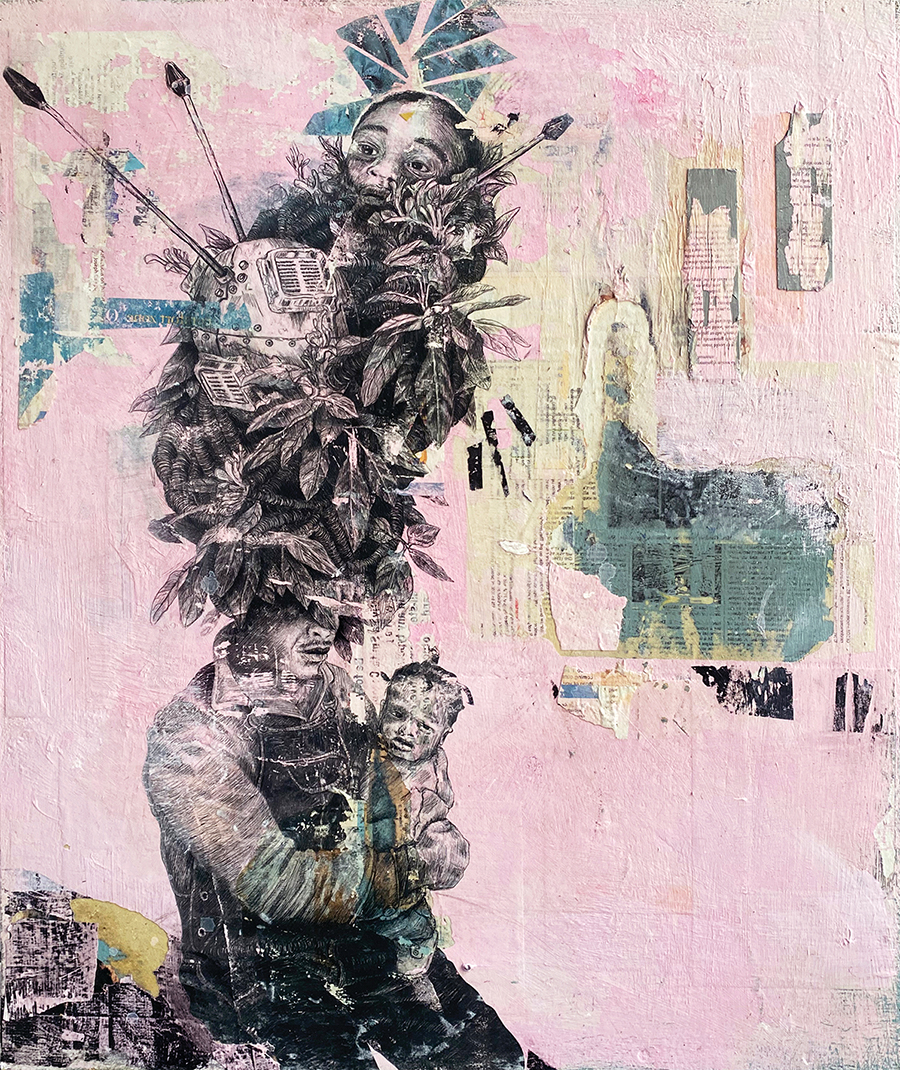
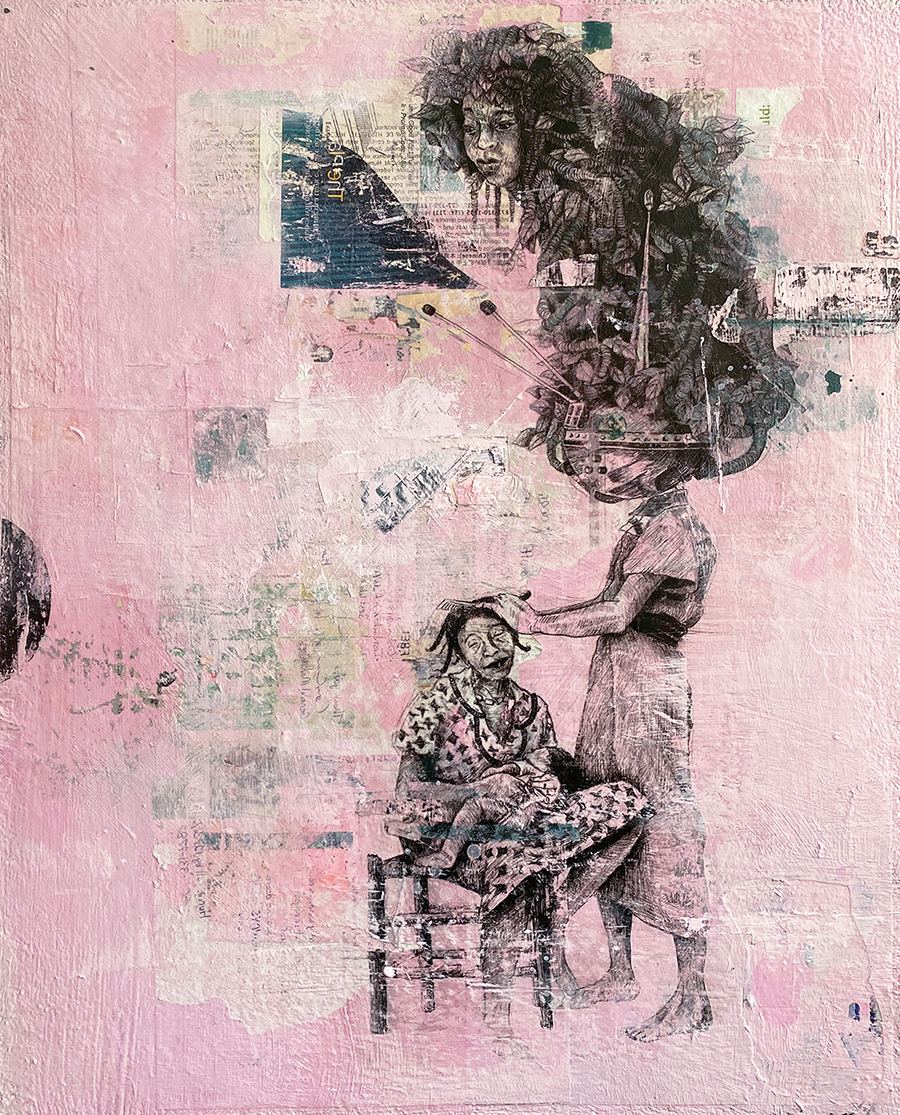
Left: Putting Breath in the Body #1, ink, printed material, transfer, acrylic, 23.5″x 28″, 2022
Right: Putting Breath in the Body #2, ink, printed material, transfer, acrylic, 23.5″x 28″, 2022
A Moment of Rest While Convincing Monsters That I Am Human, a drawn mural created for a giant wall at the entrance to the Southeastern Center for Contemporary Art (SECCA) in Winston-Salem last year, was made following the nationwide uprisings over the murders of George Floyd and Breonna Taylor, an effort to depict both the injustice and the exhaustion of that fight. “Those marches were for the bare minimum, just so that the justice system would work,” Williams says. “Not that it would do anything extraordinary — just work.” The mural depicts a man hunched over beneath a mountain of clothes, which Williams says indicates “how absurd it is, but also how exhausting it is.” Hoodies, jeans and sneakers refer to the distorted, negative stigma society puts on these signifiers of young Black men; the enormous pile indicates how they “constantly have to deal with the piling on of these perceptions.” The burdened figure persists, but pauses, “needing to take a break, and reclaim humanity,” says Williams.
Williams’ work has been exhibited at the North Carolina Museum of Art, Greensboro’s Weatherspoon Art Museum and at Raleigh’s Contemporary Art Museum (CAM). He has had prestigious residencies and fellowships at Duke University and the McColl Center. Most recently, he was an artist in residence at the Joan Mitchell Center in New Orleans, where he created sculptural work inspired by a quote from the author Octavia Butler: “There’s Nothing New / Under the Sun / But There Are New Suns.” Last July, Williams took a tenure-track job teaching art at the University of Florida. PS
This is an excerpt from Art of the State: Celebrating the Art of North Carolina, published by UNC Press.
